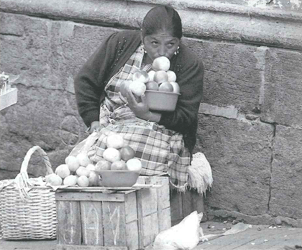Salpicón Nicaragüense
A Latin American Culinary Puzzle
![]()
Nicaraguan salpicón is one of the defining dishes of present-day Nicaraguan cuisine and yet it is unlike anything else that goes by the name of salpicón. Rather, it is an entire menu revolving around a large piece of stewed beef. Evidently, the Nicaraguan dish evolved at a time when salpicón was more fluid in meaning and then branched out into its own distinctive cultural interpretation. Its roots might trace to late medieval Spain…we discovered a recipe for salpicón de vaca in the Novisimo arte de cocina published in Mexico City in 1831, but it employs beef and ham together and, in any case, is not like the Nicaraguan dish….
The cut of meat chosen for salpicón varies from household to household depending on finances. The preferred cut is similar to the American eye-of-the-round, the most tender and expensive part of the animal. This cost alone separates it from the gallo pinto (rice and beans) cookery of the average Nicaraguan peasant….
The meat for salpicón is placed in a large stewing pan with elaborately chopped vegetables carrots, onions, copious amounts of garlic, crushed tomatoes, cut up corn on the cob, ripe plantain, yucca, even diced potatoes, chayote or purple yautia known as quequisque in Nicaragua….The meat is then covered with water, sour orange juice, and white-water vinegar and stewed until tender….Once it is cooked, the beef is removed from the stew and shredded. Minced chiltomas, lime juice, and onions are then added. The hash is then placed in a serving bowl and sent to the table along with warm rice and hot sopa de res. Part of the rice and hashed meat is reserved, moistened with the sopa de res, and used as stuffing in empanadas de maduro….Now the salpicón meal is complete: sopa de res as a starter, white rice, hashed meat, and empanadas, a full meal derived from one cut of beef.
Spring/Summer 2001
William Woys Weaver, Food historian and Nicaraguan Enrique Balladares-Castillo wrote a longer version of this article for the Radcliffe Culinary Times (Winter 1999). The authors are interested in finding historical parallels for this menu and invite readers to contact them with comments in English or Spanish.
Related Articles
The Transnational Villagers
It is commonplace today to speak of the “Global Village”. The growth of technology such as the Internet, cheap international phone service, faxes and satellite television shrink the distance…
Food in the Americas
People give food meaning. It’s easy to trivialize, because food is everywhere. But love of food is love of life…
What Food? Who Eats It? Why Does It Matter?
Searching for food together with growing, cooking, and eating it has consumed more time than any human activity except sleeping for most of human history. Curiously, historians have never…




